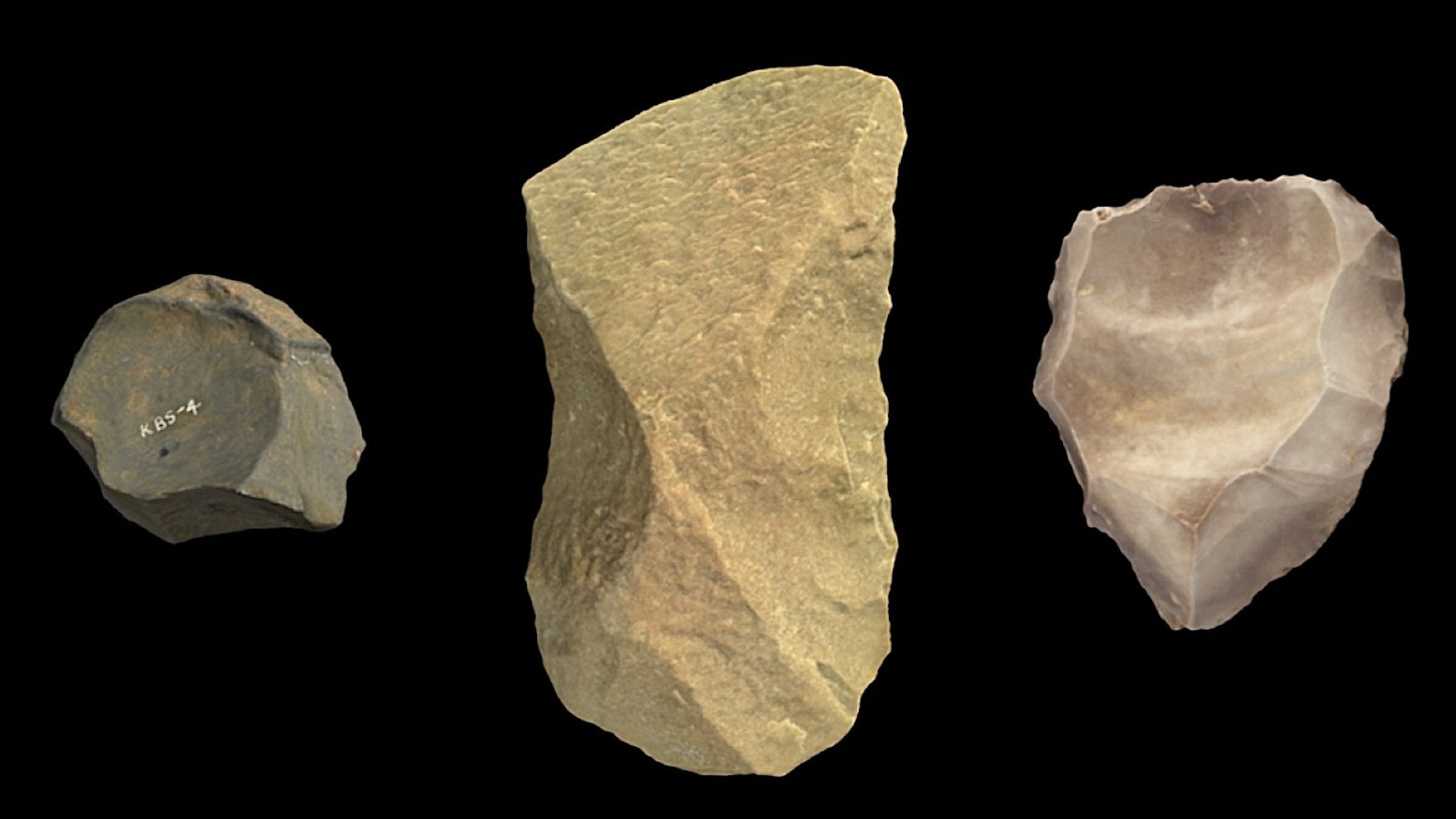Early humans appear to have experienced a sudden and rapid advance in technology around 600,000 years ago, according to new findings by a team of anthropologists exploring the use of ancient stone tools.
The researchers behind the findings say this likely represents a key inflection point in ancient human development, where the transfer of ancient knowledge from generation to generation, known as cumulative culture, resulted in increasing advances in society that propelled humanity’s biological, cultural and technological development.
“Our species, Homo sapiens, has been successful at adapting to ecological conditions — from tropical forests to arctic tundra — that require different kinds of problems to be solved,” said associate professor Charles Perreault, an anthropologist from Arizona State University’s School of Human Evolution and Social Change. and a research scientist with the Institute of Human Origins.“Cumulative culture is key because it allows human populations to build on and recombine the solutions of prior generations and to develop new complex solutions to problems very quickly.”
Toolmaking Suddenly Underwent a Rapid Advance in Technology
In their published study, “3.3 million years of stone tool complexity suggests that cumulative culture began during the Middle Pleistocene,” which appeared in the journal PNAS, Perreault and fellow author Jonathan Paige, a University of Missouri anthropologist, explain how their analysis of stone tools dating back to 3.3 million years ago revealed this sudden and unexpected technological leap.
The researchers analyzed tools collected from 57 separate ancient hominin sites. The oldest tool, dating back over 3 million years, came from an African site. However, the researchers also studied ancient stone tools discovered at ancient hominin sites in Eurasia, Greenland, Sahul, Oceania, and the Americas.
Next, the team ranked the tools’ complexity. This meant analyzing how many steps would need to be taken to create the tool in question. The researchers characterized and ranked 62 distinct tool-making sequences.


After charting the tools’ complexity, the team saw some unexpected patterns. Tools made between 3.3 million years ago and 1.8 million years ago required somewhere between two and four procedural units to manufacture. The complexity of stone tools steadily increased over the next 1.2 million years, with the top samples requiring an impressive seven steps. While significantly more complex than tools made over a million years earlier, the researchers say this is still within the range of complexity for a single craftsman. This means knowledge from previous generations of toolmakers had most likely not been passed down over that span.
However, the researchers discovered that when they looked at tools made around 600,000 years ago, in the Middle Pleistocene, they began to see a sudden and unexpected increase in complexity. Tools from this time period were not only more complex, but more complex manufacturing processes were required to make these tools.
“We analyzed the stone tools made during the last 3.3 million years,” the researchers explain. “We found that these stone tools remained simple until about 600,000 B.P. After that point, stone tools rapidly increased in complexity.”
Where previous tools had required only a handful of procedural steps to manufacture, tools from this time often required as much as 18 steps. According to Paige and Perreault, this is way too many steps for a single generation of craftsmen to achieve without the knowledge passed down from previous generations.
This evidence, the researchers write, is consistent with findings from other research teams, suggesting that such a rapid transition “signals the development of cumulative culture in the human lineage.”
“By 600,000 years ago or so, hominin populations started relying on unusually complex technologies, and we only see rapid increases in complexity after that time as well,” said Paige. “Both of those findings match what we expect to see among hominins who rely on cumulative culture.”
Dawn of Cumulative Culture and the Evolution of Modern Humans
Although the evolution of stone toolmaking provides evidence for the dawn of cumulative culture, the researchers behind the findings say such a leap likely affected all aspects of early humans. This likely included changes in human culture, biology, and even the ability to adapt to a range of environments and habitats found across the globe.
“The human dependence on cumulative culture may have shaped the evolution of biological and behavioural traits in the hominin lineage,” Paige and Perreault explain, “including brain size, body size, life history, sociality, subsistence, and ecological niche expansion.”
Such changes can increase in complexity as genetic and cultural evolution happen concurrently. According to the researchers, this “gene-culture coevolution process” may explain increases in relative brain size, a prolonged life history, “and other keystone traits underlying human uniqueness.”
Notably, the researchers point out that the Middle Pleistocene shows many other examples of evolving technology. For example, studies of this era reveal consistent evidence of the controlled use of fire, hearths and other domestic spaces. This era also features the evolution of wooden structures constructed with logs hewn using hafted tools, which, the researchers explain, “are stone blades affixed to wooden or bone handles.”
In their conclusion, Paige and Perreault note that toolmaking is just one measure of cumulative culture, and further study could spot other increases in this behaviour that may have occurred in the past but are not immediately evident in the archaeological record. “It is possible that early hominins relied on cumulative culture to develop complex social, foraging, and technological behaviours that are archaeologically invisible,” they write.
Ultimately, the research team believes that their findings show how knowledge can be passed down through the generations without each successive generation having to rediscover the knowledge of the past. When enough knowledge makes it through, like what appears to have happened 600,000 years ago, this process can result in an ever-increasing and adaptive knowledge pool that allows for a consistent upward progression in cultural and technological evolution.
“Generations of improvements, modifications, and lucky errors can generate technologies and know-how well beyond what a single naive individual could invent independently within their lifetime,” the researchers conclude. “When a child inherits her parent’s generation’s culture, she inherits the outcome of thousands of years of lucky errors and experiments.”
“The result is, our cultures — from technological problems and solutions to how we organize our institutions — are too complex for individuals to invent on their own,” Perreault adds.
Christopher Plain is a Science Fiction and Fantasy novelist and Head Science Writer at The Debrief. Follow and connect with him on X, learn about his books at plainfiction.com, or email him directly at christopher@thedebrief.org.

